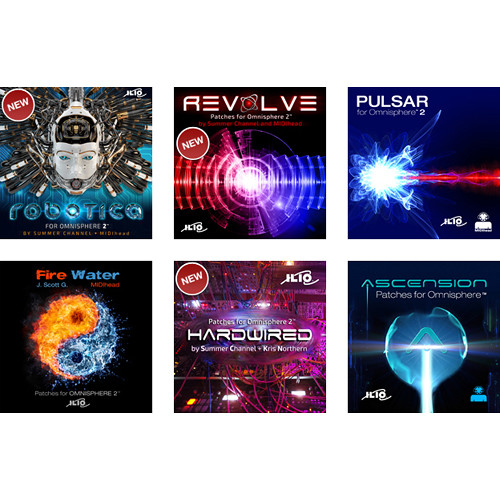Mar 06, 2017 This pack allows you to browse, load, and control the entire factory library (7,541 patches) of Omnisphere 2 directly in Maschine and Komplete Kontrol. You must own Omnisphere 2 in order to use. Available for Download through December 1, 2016. To show thanks to all of our Spectrasonics' Omnisphere 2 and Keyscape customers, past, present and future, ILIO has created a FREE 20-patch library available for download from today through December 1, 2016.
ProgramData is normally a hidden file. To 'Show Hidden Files' go to Start Menu/Control Pane/Appearance And Personalization/Folder Options/View tab. Select the 'Show Hidden Files and Folders' option and hit 'Apply'
On Windows XP, the Spectrasonics folder is located here:

C:Documents And SettingsAll UsersApplication DataSpectrasonics
Documents And Settings is normally a hidden file. To 'Show Hidden Files' go to Start Menu/Control Options/Folder Options//View tab. Select the 'Show Hidden Files and Folders' option and hit 'Apply'
The data files for Omnisphere are stored in your STEAM folder. When you update your patches or soundsources, you are updating files in your STEAM folder, which was created when you originally installed Omnisphere. Your STEAM folder is located inside your Spectrasonics folder. See the instructions below to find your Spectrasonics folder. Inside your Spectrasonics folder you'll find STEAM, which may be the STEAM folder, or it may be an alias (Mac) or Shortcut (Window) to the STEAM folder.
On Mac, the Spectrasonics folder is located here:
Macintosh HD/Users/<Your Username>/Library/Application Support/Spectrasonics
From Mac OS X 10.7 and higher, Apple have made the User - Library folder a hidden folder by default. This is to stop general Mac users fiddling with settings, however, music makers will require using this folder from time to time.
Please see the handy article below on how to unhide your User Library folder in Mac OS X 10.7 or higher
On Windows Vista and Windows 7, the Spectrasonics folder is located here:
C:ProgramDataSpectrasonics
ProgramData is normally a hidden file. To 'Show Hidden Files' go to Start Menu/Control Pane/Appearance And Personalization/Folder Options/View tab. Select the 'Show Hidden Files and Folders' option and hit 'Apply'
On Windows XP, the Spectrasonics folder is located here:
C:Documents And SettingsAll UsersApplication DataSpectrasonics
Documents And Settings is normally a hidden file. To 'Show Hidden Files' go to Start Menu/Control Options/Folder Options//View tab. Select the 'Show Hidden Files and Folders' option and hit 'Apply'
Storing sound files on a secondary drive

If you are wanting to store your Omnisphere audio files on a second hard drive, you can put the Spectrasonics/STEAM folder onto your second drive. You will then need to create an alias or 'short cut' to this location on your main Mac or Windows drive. You can create an alias (Mac) or a short cut (Windows) by right-clicking (ctrl+click for Mac users) the STEAM folder and selecting it from the menu.
Once you have done this, you will then need to either locate or create the following folder on your main drive:
On Mac, the Spectrasonics folder needs to be created here:
Macintosh HD/Users/<Your Username>/Library/Application Support/Spectrasonics
On Windows Vista and Windows 7, the Spectrasonics folder needs to be located here:

Omnisphere 2 Library Missing Key
C:ProgramDataSpectrasonics
On Windows XP, the Spectrasonics folder needs to be created here:
C:Documents And SettingsAll UsersApplication DataSpectrasonics
Omnisphere 2 Library Missing Key
You will then need to move the STEAM alias folder (or the STEAM short cut folder) into the Spectrasonics folder on your main drive.
Omnisphere Library Download
Note: On Mac, once you have placed the 'STEAM alias' folder on your main drive, you will need to rename it removing the word alias from the file, otherwise it will not work. You should now have a 'STEAM' folder on your main drive that is pointing to its actual location on your second drive.
Now when you close and re-launch your host application, Omnisphere should be pulling the audio files from off of the second hard drive.